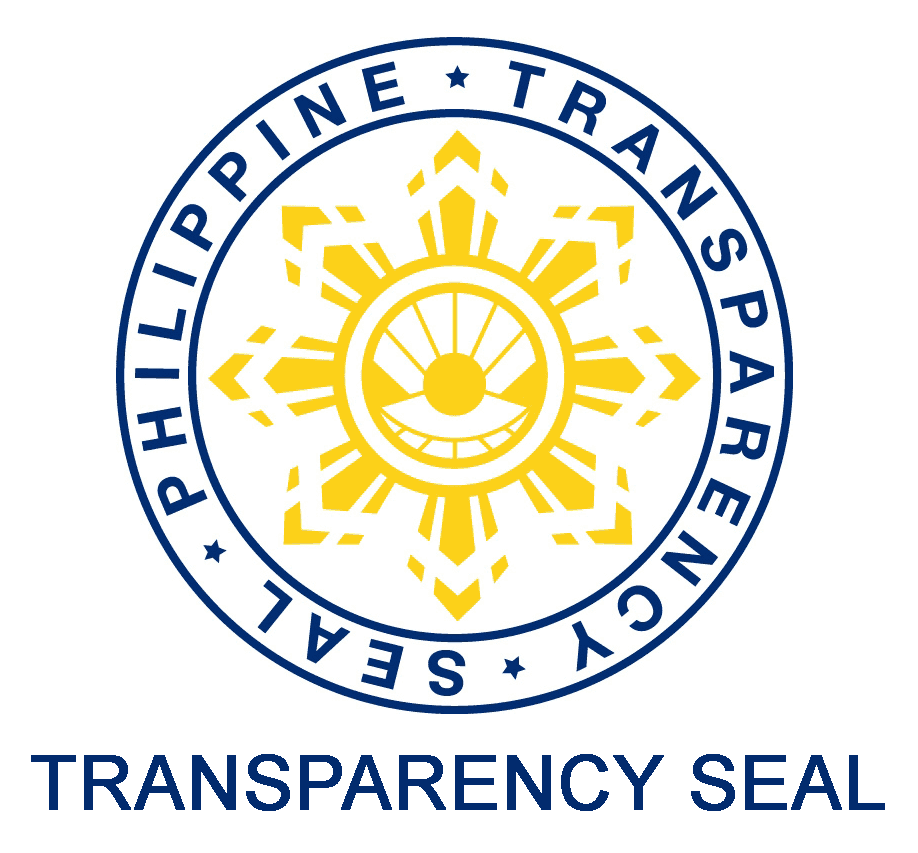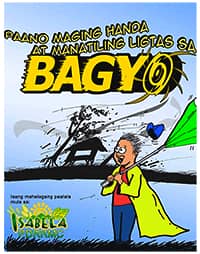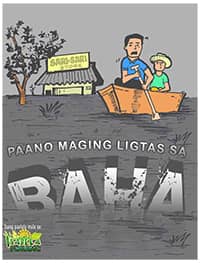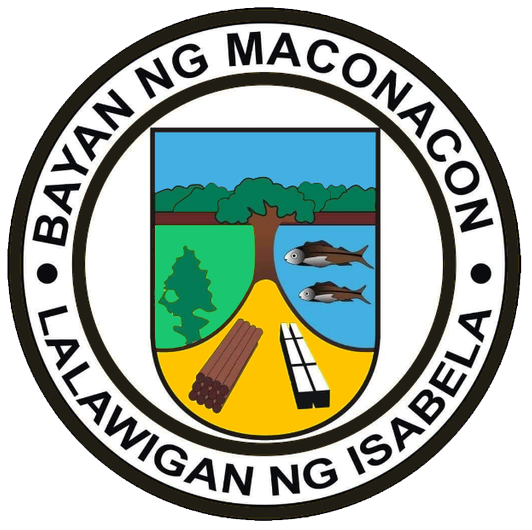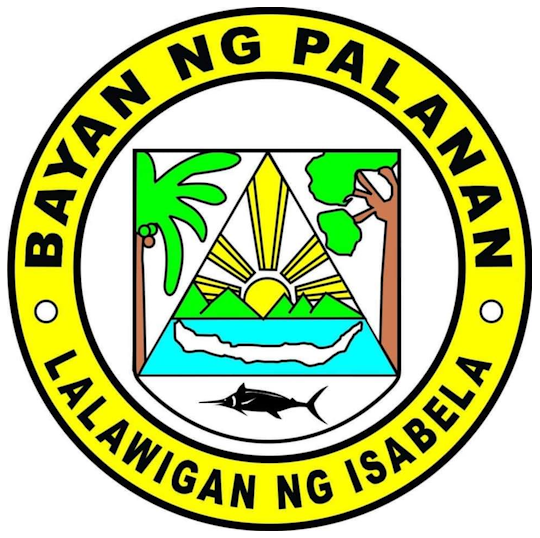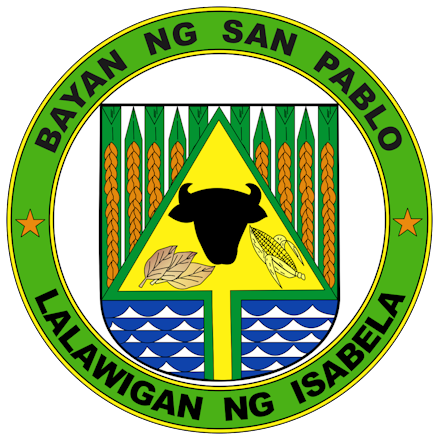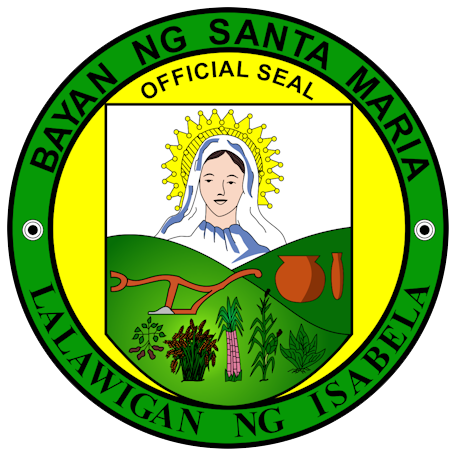The MUNICIPALITY OF DIVILACAN
|
The municipality of Divilacan is situated in Northeastern Isabela. It is one of the four coastal municipalities of the province. The town is bounded on the north by the town of Maconacon; on the east by the vast Philippine Sea; on the west by the towns of Tumauini and Ilagan and on the south by the town of Palanan.
Based on the technical description of the town when it was created, it has an approximate land area of 120,000 hectares. However, in 1996, a perimeter survey jointly conducted by the municipal government and the Land Management Bureau, Department of Environment and Natural Resources, Regional Office 02, rectified the land area of the town to 89,202 hectares, including a contested area of 253 hectares in Barangay Dimapnat.
|
Facts and Figures
Sources: https://www.dbm.gov.ph, PENRO-Isabela, PPDO-Isabela https://psa.gov.ph |
The CITY OF ILAGAN
The City of Ilagan
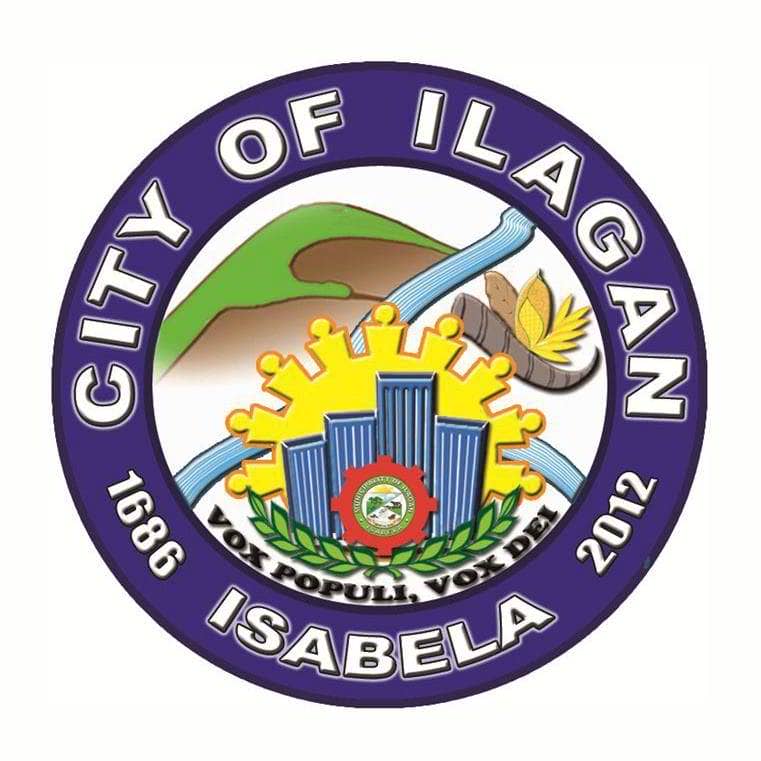
VISION and MISSION
Vision
We envision ILAGAN as premier capital town, nationally and globally competitive, a home that abounds with opportunities for growth to empowered Ilagueños.
Mission
Operate and sustain an autonomous Local Government Unit with responsive and accountable local government structure, self – reliant and capable for self – deciding and planning administrative, fiscal and development affairs effectively contributing to the attainment of national goals and the Municipal vision of development.
Economic Profile
Agriculture and fishery remain to be the main backbone of the municipal economy. 23, 803 hectares are basically cultivated land and 314 hectares are utilized for fish culture. However, the suitable farm area of Ilagan is 32, 153.19 hectares potentials for crops, livestock and fish production. This figure shows that a significant percentage (24.99%) is not being fully utilized for agricultural production leaving them idle and under utilized.
Commerce and trade is the second economic base income of the people of Ilagan. The year 2006 showed that there are currently 1,795 registered business establishments. For year 2000, commercial trade was at 1,996 revealing that there were more less 201 establishments that closed down within the period 2000 – 2006. There were even more establishments in 1995 with a total of 1,877 in all. The trend shows that from 1995 – 2000, there was a growth of 2.94% but from 2000 – 2006 a decreasing growth rate of -1.75% was registered . just like the past years, for year 2006, commercial activities within the municipality are classified into whole sale, retail and service oriented business.
The industrial sector of the municipal economy comprises of 210 establishments in year 2006 as compared with 207 in 2000. This reflects a 2.4% increase in industrial activities over a period of six years (2000-2006). The existing industries are mostly on a micro scale except for the coca – cola company manufacturing plant located at Barangay Guinatan which is the only significant employment generator within the locality. Following the previous year’s trend, industries currently operating are agro-industries, wood base manufacturing or service-oriented industries.
There is an abundance of non-metallic like gravel, sand and boulders available in the barangays traversed by major rivers like the Cagayan River, Pinacauanan River and Bintacan Rivers. Metallic resources are likely to be found in the mighty sierra Madre ranges but are not allowed for exploration as it is a protected area and a national park.
Social Framework Profile
Educational institutions established within the municipality can offer the best education to its school going is population. There are seven (7) pre-grade schools, twelve (12) primary schools, seventy two (72) elementary schools , seventeen (17) secondary schools and four (4) colleges despite the educational opportunities offered by these multi – level schools, the 2006 literacy rate of 73% for Ilagan is Blatantly lower than the literacy rate of 87.99% in 2000 by 14.99%.
Further, Enrolment Participation Rates (EPR) as another indicator for education show disappointing results. The 2006 Elementary EPR at 79.68 % meaning the out of 100 school going age population only 79-80 are currently enrolled in elementary education and that 20 children are not in schools compared with 2000 EPR at 110 % that connotes that during SY 2000 all school-going age population was in school. The drop in EPR therefore in 2006 is an alarming situation for the education sector. More children cannot even finish a basic education and this is attributed to the inability of household, due to economic difficulty, to send their children to school. The 2006 secondary EPR while is a marked improvement of 77.16% over the 2000 EPR of 69 .50% is still below the national goal. The tertiary EPR of 34.56% likewise is not satisfactory reasons might be that other students might have enrolled in colleges outside of Ilagan but still a bigger chunk is not enrolled in any college due to poverty.
The educational status of the school going age population of Ilagan presents a challenge to the educational sector that is, if these indicators will continue to decrease it seems that the free basic education program of the government id not enough to encourage impoverished students to enter school where reading and writing is basic to learn.
Basically, the medical services within the municipality are generally adequate as the responsibility of providing health services is shared between the government and the private sector. There are five existing big hospitals, two main health centers, 21 barangays health stations and 24 private medical and dental clinics. Except for dentists, the current number of health personnel is adequate to effectively service the populace.
There has been a repeated break of malaria epidemic in the locality which may be caused by poor sanitation practices of the people. Malnutrition is still a major health issue among children. There are 57% of the total households still using unsanitary means of human waste disposal which is even higher than the 2000 figure of 43% households with no sanitary toilets.
With the limited agro – industrial activities, the municipality is still free of air and noise pollution. Garbage collection system is confined within the urban area but must be expanded to include other adjoining barangays. Garbage collected by municipal trucks are dumped in a landfill at San Felipe but a need to relocate the dumpsite is a must since San Felipe is an urbanizable area as a evidenced by the sprouting subdivisions thereat.
The municipality is still experiencing housing deficiency. Housing shortage increased to 1,026 dwelling units for year 2006. Subdivision developers are trying to bridge the housing dearth by building houses with attractive housing loan packages but still with the present economic situation, the residents are unable to buy a decent housing for their own.
While existing local police force is inadequate per national standards, the municipality is generally a peaceful place. This can be attributed to the vigorous campaigns against crimes as well as police visibility which is apparent within their area of jurisdiction. The presence of military camp at barangay Baligatan is an advantage to the maintenance of a peaceful environment of Ilagan.
Infrastructure and Utilities Framework Profile
The municipality has a total road network of 420.5790 kilometers. The present length of urban roads is 22.813 kilometers serving an urban population of 26, 709 per 1000 urban population which is below the standards ratio of 2.4 kilometers per 1000 urban population implying a deficiency of urban roads in the municipality.
Rural areas which cover a total of 21,377 hectares of arable land has a total road length of 397.766 kilometers. The ratio of rural roads to arable land is 1.86 which means that there are 1.86 kilometers of roads for every 100 hectares of agricultural land. The resulting proportion indicates that there is an excess 0f 77.106 kilometers of rural roads in the municipality.
While there are enough rural roads most of these are in a poor gravelized condition. The deficiency in road length within the urban areas totalling to 41.2886 kilometers must be provided to efficiently transport motorist and commuters within the urban area for the current year.
Water and power supply for the municipality has yet to be improved. The level III waterworks within the urban area has served only 30 % of the existing households. Power outages should be minimized to support the socio economic activities with the locality that would redound to better service delivery from these vital economic boosters.
EXISTING LAND USES
GENERAL LAND USE
Growth and development in Ilagan has always been considered consistent but varies in intensity. These are attributed to various factors such; location, natural resources, facilities and other factors that affect development of the municipality must be planned in order to avoid undesirable growth or expansion of the municipality.
The existing land use of the municipality is a source of information regarding the physical and socio-economic character of the locality. This information will enable us to determine whether or not the existing pattern answers the need of the populace or is a contributor in steering development of the municipality.
The municipality of Ilagan has a total land area of 1, 166.26 sq.kms. it is of varied uses that answer the needs of its inhabitants. The various land uses are classified as:
Built – up Areas
This land use covers residential, commercial, industrial and institutional areas situated in all barangays of Ilagan. Likewise included are functional utilities and other areas utilized for settlement and its inherent components. The existing built up area in the municipality is 3,931 hectares. Comparing with 2000 figures, there is an increase of 2,529.50 hectares from the 1,301.50 hectares built-up area in 2000.
Built – up areas occupy 3.37% of the total municipal area.
Agricultural Area
This land use utilized primarily for agricultural production that includes crop production, livestock production and agro – forestry.
Agricultural use covers 24,117 hectares comprising 20.68% of the municipal land area. This indicates that during the previous years there was conversion of some agricultural areas by 7.28%. from the total agricultural area of 32,604.26 hectares in 2000.
Forest Lands
This area is composed of the first and second growth forest. It is covered with dipterocarp species. In the forest land, there are specific areas for production and protection/conservation.
Forest land area of the municipality remained at status quo at 72,048.26 hectares implying that the forestlands of the municipality have been preserved and not reclassified to any other uses as provided by existing forestry laws. Forest occupy the larger portion of the municipality covering 61.78% of its land area.
Roads and Utilities
The total aggregate area of roads and utilities within the municipality is approximately 2,344.05 hectares or 2.01% of the municipal land area, a significant increase of .21% in road and utilities expansion from the 2000 figures.
This specific land use includes national, provincial roads within the municipality and the municipal streets and barangay roads regardless of condition as well as utilities like dumping areas and cell sites.
Grassland/Open Spaces
Considered as grassland and open spaces are leisure parks, pastures, cemeteries and the buffer areas along banks and rivers and creeks. There are 9,633.17 hectares of grassland and open spaces in the municipality covering 8.26% of the total land area.
Water Bodies
Water bodies which include the mighty Cagayan River, the Pinacanuan River, the Bintacan River and their tributaries runs along an aggregate area of 3,733.52 hectares or 3.20 % of the total land area of Ilagan.
Ilagan Protected Landscape
This area is located within the buffer zone of the northern Sierra Madre National Park. It is being developed and maintained by the Local Government Unit of Ilagan with the assistance of some NGA’s and NGO’s. It covers an area of 819 hectares or just .70% of the area of the municipality.
Existing Urban Land Use
The urban core is composed of 11 urban Barangay and 5 rural barangays with land uses varying according to mans needs and activities. These are delineated as residential, commercial, industrial, parks and open spaces, institutional, agricultural, and roads, streets and utilities.
The urban area has a total area of approximately 3,454 hectares. With a total household population of 38,255.00, the gross urban density is 11.08 persons per hectare. This population density is still relatively low and still falls under a low density residential area.
Residential Area
These are areas occupied by structures for residential or dwelling purposes. These areas are located within the planning area, strategically constructed in areas where owners deem best for their own benefit. The pattern is basically dictated by the perceived convenience of the populace. The approximate area covered by the residential is 448 hectares which is over the 2000 existing residential area of 231 hectares or 51.56% increase.
Residential areas are present 12.97% of the total urban land area. Although most of the lands in the residential area are privately owned there are still unoccupied lots spread out within the urban area.
Commercial Area
This includes areas occupied by public markets, wholesale and retail stores, restaurants, banks, shops and other establishments or structures engaged in commercial activities. the bulk of those who are engaged in trade and commerce are found in the public markets. The area covered by the commercial area is approximately 90.56 hectares or 2.62% of the urban core.
As compared to the 2000 existing commercial area of 17 hectares, the increase of 73.56 hectares in 2007 is an indication that Ilagan is racing towards commercialization.
Institutional Area
Institutional uses are the structures utilized as hospitals, clinics, schools, offices and churches. Likewise, considered to be within the institutional area are government buildings. Approximately 66.56 hectares are being utilized for institutional purposes in the urban core.
Institutions comprise 1.93% of the total area of the urban core. As compared to the 2000 data, institutions increase by a minimal area of .56 hectares only.
Industrial Areas
These areas are occupied by industrial activities undertaken such as; the coca – cola Manufacturing plant at barangay Guinatan;metalcrafts, welding shop sand the like spreads at different urban barangays. About 5.28 hectares in the urban core is being utilized for industrial purposes.
The existing industries represent 5.28 has. Or 0.15% of the total land area of the urban area.
Roads, Streets and Utilities
Roads and Utilities within the urban core occupy an aggregate area of 64.88 hectares. These include national, provincial, municipal and barangay roads and utilities like cell sites and other transmission facilities.
This specific land use comprises 1.88% of the total land area of the urban core.
Parks and Open Spaces
These are utilized as leisure parks and cemetery. Also considered as open space are the non – buildable areas along banks of rivers and creeks, pursuant to the provision of the Water Code of the Philippines. Likewise part of the parks /open spaces are lands still lying idle and vacant.
About 1,847.72 hectares of parks and open spaces are within the urban core comprising 54.28% of the total land area of the urban planning area.
Agricultural Areas
Approximately 528 hectares of land representing 15.29 % of the urban area is still dedicated for agricultural production. Vegetables, corn and fruit bearing trees are grown in this area. There are agricultural areas not planted with crops but are potential for agricultural production.
Water bodies
The Pinacanauan River and other water tributaries occupy an area of approximately 376 hectares comprising 10.88% of the urban area.
The MUNICIPALITY OF MACONACON
|
Maconacon is a 3rd class municipality in the province of Isabela, Philippines. According to the latest census, it has a population of 4,253 people in 977 households. Maconacon is politically subdivided into 10 barangays.
|
Facts and Figures
Sources: https://www.dbm.gov.ph, PENRO-Isabela, PPDO-Isabela https://psa.gov.ph |
The MUNICIPALITY OF PALANAN
|
Marked by highly differential physio-geomorphological formations, Palanan, especially the Poblacion is located inside a Valley-like fertile alluvial plain. The Poblacion fronts river delta draining fresh water to Palanan Bay along the Pacific Ocean. Since Palanan is in the Pacific Belt of Fire, its land formation was attributed to volcanic activities or land movements due to tectonic phenomena. The rich volcanic soil characteristics in the Municipality proves that land formation in the place was highly traceable from volcanic origin. Palanan being part of the tropical zone, is exposed to relatively hot and humid environment. Northeast monsoon and southeast monsoon creates remarkable wet and dry seasons. These monsoons bring typhoon annually to Palanan destroying most of its crops as well as human properties. The adverse climatic conditions during the rainy season, the lack of industries and employment opportunities, the absence of an affordable transportation system as well as internal transport system and the absence of basic socio-economic facilities hindered the economic growth and physical development of Palanan. In spite of this, however, human settlements continue as a result of the increasing population. The town Palanan is located along Pacific Coast and situated on 122o9’ to 122o32’ East longitude and 16o 50” to 17o 10’ North latitude. It is one of the coastal towns of Isabela.
|
Facts and Figures
Sources: https://www.dbm.gov.ph, PENRO-Isabela, PPDO-Isabela, https://psa.gov.ph |
The MUNICIPALITY OF SAN PABLO
|
San Pablo is a 2nd class municipality in the province of Isabela, Philippines. According to the latest census, it has a population of 25,384 people in 5,134 households. San Pablo is politically subdivided into 17 barangays.
|
Facts and Figures
Sources: https://www.dbm.gov.ph, PENRO-Isabela, PPDO-Isabela https://psa.gov.ph |
The MUNICIPALITY OF SANTA MARIA
|
The municipality of Sta. Maria, Isabela is located in the interior northwestern part of the province of Isabela. It is bounded on the north by the municipality of Enrile, Cagayan and on the East of Cagayan River which the natural boundary between Cabagan, Isabela and on the west of Kalinga Province. It is more or less 65 kilometer away from ilagan, capital town of Isabela. Sta. Maria is also accessible via Tuguegarao, Cagayan with a half-cemented and half-graveled roads. An alternate route to reach Sta. Maria is by passing through Quezon, Isabela with a more convenient cemented road of about 39 kilometers.
|
Facts and Figures
Sources: https://www.dbm.gov.ph, PENRO-Isabela, PPDO-Isabela https://psa.gov.ph |
